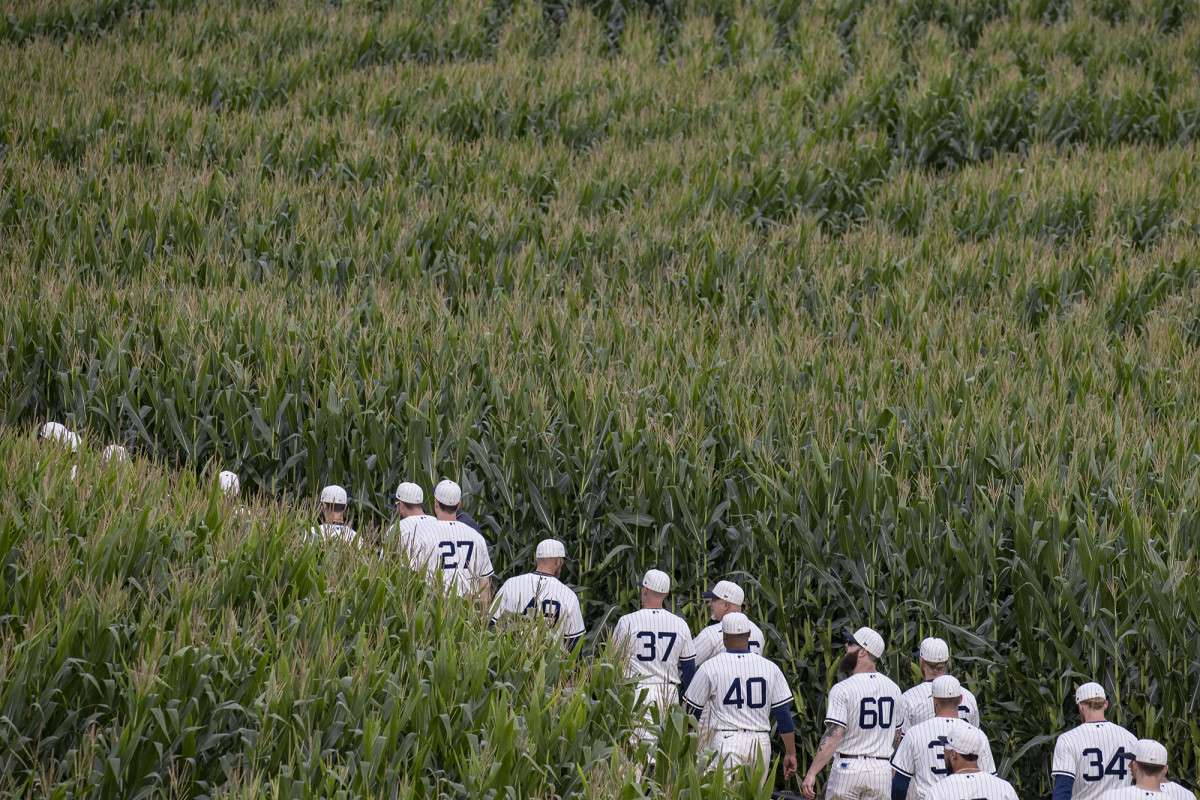Corn Was the Photographic MVP of ‘Field of Dreams’ Game
Full Frame is Sports Illustrated's exclusive newsletter for subscribers. Coming to your inbox weekly, it highlights the stories and personalities behind some of SI's photography.
To get the best of SI in your inbox every weekday, sign up here. To see even more from SI's photographers, follow @sifullframe on Instagram and visit SI.com/photos. If you missed last week’s edition on George Foreman and his baby tiger, you can find it here.
The Field of Dreams game played last week between the Yankees and White Sox in Dyersville, Iowa, “featured a Hollywood ending,” wrote Sports Illustrated’s Nick Selbe. Chicago shortstop Tim Anderson ended the game with a two-run blast in the bottom of the ninth to give his team a dramatic 9–8 win.
Add in cameos from actors Kevin Costner and James Earl Jones during the broadcast, and the TV production of the game took on a special feel. This was more than a typical mid-August baseball game.
In fact, it was reportedly Fox’s most-watched MLB regular-season game since 2005.
But the seemingly made-for-TV event proved to pose a bit of a challenge for photographer David E. Klutho. The emphasis on broadcast productions has been a change in how he’s covered sports in the 35 years since he started shooting for SI in 1986.
“It’s the case so much these days,” Klutho says. “A lot of times, the widest lens wins. Someone’s always going to be in your way.”
For example, Klutho knew that the players would make a dramatic entrance onto the field from the corn behind the outfield wall before the game started. But he wasn’t able to get a clean shot from ground level because Fox set up a camera booth to get up-close shots for TV. Instead, Klutho had to stay higher and shoot down on the players to capture them walking out to the field from the corn.
The result helped establish a sense of place in his photographs. On site to shoot the overall environment rather than just the game action, he says, Klutho made images that focused on the scene (the vast Iowa sky and the seemingly endless rows of corn), rather than the action on the field.
Combining the action and scene into one image wasn’t easy for a number of reasons.
“Once the game started, you’re not going to get anything unless they run to the wall and jump up to catch a ball, because that’s where the corn was,” Klutho says.
Then, there was the issue with light.
Klutho focused on the perfect moment to capture the sunset and the purple-orange sky it created. He waited above home plate because he knew that with his wide-angle lens he had to be centered perfectly to avoid the image being thrown off-kilter. With so many people around, there was no guarantee that if he left that spot he’d be able to get back there. So he stayed and waited to make the image.
Then, after the sun disappeared below the horizon, it got dark—fast. Just the field was lit in a sea of pitch-black corn fields.
“Once it got dark, it got dark to the point where everything disappeared,” Klutho says. “You’re not seeing the fields in the distance and the details of the corn. It’s just a darker kind of look.”
By that time, the game became the center of attention with the Yankees’ top-of-the-ninth comeback ultimately foiled by Anderson and the Sox. It proved to be a memorable night for baseball, wrote SI’s Tom Verducci.
“The setting was so perfect, the game so entertaining and the demand for tickets so great that the Field of Dreams game should become a tentpole game for the sport,” he wrote. “Like Opening Day, the All-Star Game, Home Run Derby and the Hall of Fame inductions, the Field of Dreams game should give baseball another destination date on the calendar amid the sea of games over six long months.”
Have questions, comments, or feedback about Sports Illustrated's newsletters? Send a note to josh.rosenblat@si.com.









































